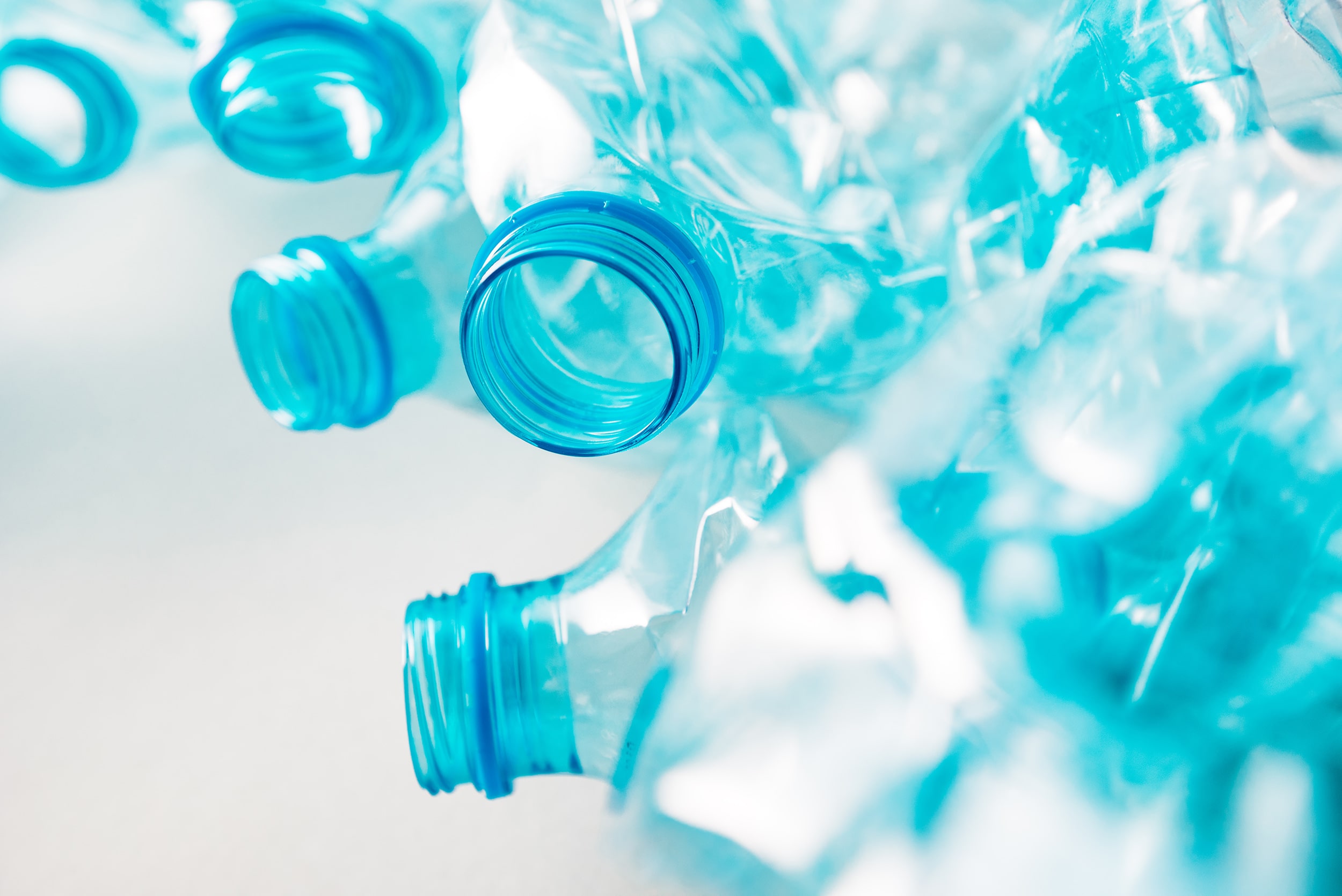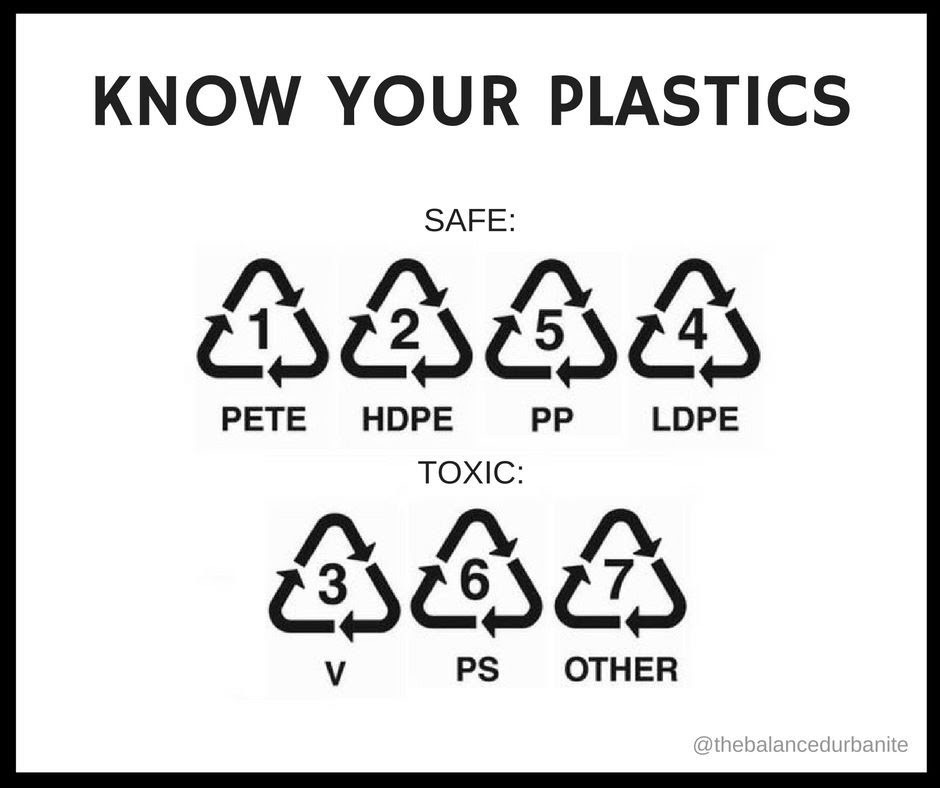I’ve always thought of myself as a relatively healthy person, but the deeper that I dive into natural living, the more I realize there is so much the general public, (myself included) does not know. To date, one of the biggest shockers has been learning how many hidden toxins are in our everyday lives. The more I have learned the more I have felt compelled to share. Before I get into the nitty gritty of the dangers of plastic for our health, let’s look at some statistics:
- Since the 1950s, about 8.3 billion tons of plastic have been produced worldwide.
- About 2 million plastic bags are used per minute, worldwide. (New Yorkers alone use about 23 billion plastic bags each year.)
- About one in three fish that are caught for human consumption contain plastic (someone say Sushi?).
- The average person eats 70,000 microplastics each year.
- A plastic bag is only used for an average of about 12 minutes. They can take up to thousands of years to completely decompose.
- It is now believed that there are 5.25 trillion pieces of plastic debris in the ocean. Of that mass, 269,000 tons float on the surface, while some four billion plastic microfibers per square kilometer litter the deep sea. (2)

It is near impossible to avoid using plastic. It is in almost everything. Your computers, your cars,your smartphones, your kitchen, your bathroom, it holds food and beverages, medications, it’s in our toys, it’s everywhere. That being said, did you know that some plastics are extremely toxic and have been linked to certain cancers and illness (3)? I’ll be honest, I thought it was a bit of a wife’s tale… and then I REALLY STARTED TO RESEARCH IT…. and WOW.
Manufacturers often add different chemicals to plastics to give them the exact characteristics they’re looking for, like flexibility, strength, and reduced production cost.
These components can include:
- phthalates,
- bisphenol A (BPA),
- polybrominated diphenyl ethers (PBDE)
- tetrabromobisphenol A (TBBPA) —
What do all of these components have in common?
What does it mean to be an EDC or Endocrine Disruptor?
So In A Nutshell…
How Are We Exposed?
What is the Resin Identification Code (RIC)?
What Do These All Mean?
Plastic #1: Polyethylene Terephthalate (PET)
Plastic #2: High Density Polyethylene (HDPE)
What It Is Used For: This plastic is used to bottle milk, water, juice, cosmetics, shampoo, dish and laundry detergents and household cleaners. Bags for groceries and cereal box liners are also made out of the stuff. HDPE is considered a “LOW HAZARD” plastic.
BEWARE: Although HDPE is considered a low hazard plastic, it is important to note that a recent study showed that even HDPE releases minimal estrogenic chemicals when exposed to boiling water, sunlight/UV, and microwaving. Which can pose a threat for babies considering most bottles unless you use glass are made from Plastic #2.
Plastic #3: Polyvinyl Chloride (PVC)
What It Is Used For: Plumbing pipes, clear food packaging, shrink wrap, plastic children’s toys, tablecloths, vinyl flooring, children’s play mats, and blister packs (such as for medicines).
BEWARE: EXTREMELY TOXIC!! PVC contains a phthalate called DEHP, which can cause male traits to become more feminized (DEHP-containing products have been banned in many countries, but not the U.S.). PVC has also been shown an association with asthma in children. DEHP is among the first six compounds that the European Union is phasing out. A study from last year involving mice exposed to PCE / DEHP showed the mice to have increase in appetite and extreme weight gain.
Plastic #4: Low Density Polyethylene (LDPE)
What It Is Used For: LDPE are found in bags for dry cleaning, newspapers, bread, frozen foods, fresh produce, and household garbage. They’re used in shrink wrap, coatings for paper milk cartons and hot and cold beverage cups.
BEWARE: LDPE is considered a low hazard plastic. It does not contain BPA, but as with most plastics, it can leach estrogenic chemicals.
Plastic #5: Polypropylene (PP)
What It Is Used For: Plastic 5, or PP, is used to make containers for yogurt, margarine, takeout meals, and deli foods. They’re also found in medicine bottles, bottle caps and closures, and bottles for ketchup and syrup.
BEWARE: PP is considered a SAFE PLASTIC and actually has a high heat tolerance and as such, does not seem to leach many of the chemicals other plastics do.
Plastic #6: Polystyrene (PS)
What It Is Used For: Sometimes called Styrofoam, this is a plastic that’s commonly found in food service items like cups, plates, bowls, cutlery, hinged take out containers (clamshells), meat and poultry trays, and rigid food containers (e.g. yogurt), and aspirin bottles. Polystyrene is also used to make protective foam packaging for furniture..
BEWARE: Styrene can leach from Polystyrene. Temperature plays a huge role in the leaching of styrene. Styrene has been linked to cancer, but the Environmental Protection Agency has not given it a formal carcinogen classification. BUT the EPA has admitted there is an association to an increased risk of leukemia and lymphoma from exposure. (SCARY, I KNOW!) Other studies show that styrene can act as a neurotoxin in the long term exposure
Plastic #7: Other (AKA Everything Else)
What It Is Used For: It’s a kind of catch-all designation that describes packages made of a resin other than the six standard. These plastics are used to make such things as three- and five-gallon reusable water bottles, including some citrus juice and ketchup bottles. It’s also used to make oven-baking bags, barrier layers, and custom packaging.
BEWARE: AVOID THIS PLASTIC LIKE THE PLAGUE! #7 is likely to leach BPA and/or BPS, both potent endocrine disruptors!!! It’s hard to pin down the exact health risks for such a “BROAD Category” but the most significant issue is it contains the hormone-disrupting chemical bisphenol A (BPA).
What Are The Health Risks Associated With BPA?
BPA/BPS are both POTENT Endocrine disruptors linked to interfering with:
- proper mood
- growth, development
- sexual function
- reproductive function
- puberty
- They are also suspected of increasing the risk of adult reproductive cancers, obesity, heart disease and type 2 diabetes.
Another significant source of concern is from outgassing (also known as off gassing). That new-car smell or the odor from a new synthetic-fiber carpet or new plastic toy is actually called outgassing. What is chemically happening is that volatile organic compounds (VOCs) are evaporating into the air around us. These gases are, in many cases, hazardous to human health. Can trigger respiratory discomfort, rashes, dizziness, nausea etc. Long term exposure has shown connection to cancer and heart disease.
What Can You Do To Avoid These Toxins?
- ALWAYS LOOK FOR THE NUMERICAL SIGN ON THE PLASTIC! IF IT SAYS 3, 6, or 7 DO NOT USE IT! RUN! Remember to check all parts of that object (ie cup, can have multiple different types of plastics in it)
- Never heat or microwave your food in plastic containers or leave beverages in a hot car or direct sun!
- Try and avoid using plastic cutlery, utensils, and water bottles. OPT for glass or stainless steel. If you must use plastic make sure it is marked BPA-FREE. (while this is not a guarantee of safety, it at least limits BPA exposure)
- When possible, air out new plastic products like blowup mattresses, synthetic-fiber rugs, tablecloths, and toys outside for a few hours to let the VOCs disperse.


ABOUT THE BALANCED URBANITE
Through essential oils, diet, and sustainable, healthy life choices, I found a natural health and wellness solution that enabled me to take control of my health and elevate the quality of my life. My mission is to share my wellness process with others and to make it easy and accessible for anyone to implement.
RECENT POSTS
FOLLOW US ON INSTAGRAM
SUBSCRIBE TO OUR NEWSLETTER
I’ve always thought of myself as a relatively healthy person, but the deeper that I dive into natural living, the more I realize there is so much the general public, (myself included) does not know. To date, one of the biggest shockers has been learning how many hidden toxins are in our everyday lives. The more I have learned the more I have felt compelled to share. Before I get into the nitty gritty of the dangers of plastic for our health, let’s look at some statistics:
- Since the 1950s, about 8.3 billion tons of plastic have been produced worldwide.
- About 2 million plastic bags are used per minute, worldwide. (New Yorkers alone use about 23 billion plastic bags each year.)
- About one in three fish that are caught for human consumption contain plastic (someone say Sushi?).
- The average person eats 70,000 microplastics each year.
- A plastic bag is only used for an average of about 12 minutes. They can take up to thousands of years to completely decompose.
- It is now believed that there are 5.25 trillion pieces of plastic debris in the ocean. Of that mass, 269,000 tons float on the surface, while some four billion plastic microfibers per square kilometer litter the deep sea. (2)

It is near impossible to avoid using plastic. It is in almost everything. Your computers, your cars,your smartphones, your kitchen, your bathroom, it holds food and beverages, medications, it’s in our toys, it’s everywhere. That being said, did you know that some plastics are extremely toxic and have been linked to certain cancers and illness (3)? I’ll be honest, I thought it was a bit of a wife’s tale… and then I REALLY STARTED TO RESEARCH IT…. and WOW.
Manufacturers often add different chemicals to plastics to give them the exact characteristics they’re looking for, like flexibility, strength, and reduced production cost.
These components can include:
- phthalates,
- bisphenol A (BPA),
- polybrominated diphenyl ethers (PBDE)
- tetrabromobisphenol A (TBBPA) —
What do all of these components have in common?
What does it mean to be an EDC or Endocrine Disruptor?
So In A Nutshell…
How Are We Exposed?
What is the Resin Identification Code (RIC)?
What Do These All Mean?
Plastic #1: Polyethylene Terephthalate (PET)
Plastic #2: High Density Polyethylene (HDPE)
What It Is Used For: This plastic is used to bottle milk, water, juice, cosmetics, shampoo, dish and laundry detergents and household cleaners. Bags for groceries and cereal box liners are also made out of the stuff. HDPE is considered a “LOW HAZARD” plastic.
BEWARE: Although HDPE is considered a low hazard plastic, it is important to note that a recent study showed that even HDPE releases minimal estrogenic chemicals when exposed to boiling water, sunlight/UV, and microwaving. Which can pose a threat for babies considering most bottles unless you use glass are made from Plastic #2.
Plastic #3: Polyvinyl Chloride (PVC)
What It Is Used For: Plumbing pipes, clear food packaging, shrink wrap, plastic children’s toys, tablecloths, vinyl flooring, children’s play mats, and blister packs (such as for medicines).
BEWARE: EXTREMELY TOXIC!! PVC contains a phthalate called DEHP, which can cause male traits to become more feminized (DEHP-containing products have been banned in many countries, but not the U.S.). PVC has also been shown an association with asthma in children. DEHP is among the first six compounds that the European Union is phasing out. A study from last year involving mice exposed to PCE / DEHP showed the mice to have increase in appetite and extreme weight gain
Plastic #4: Low Density Polyethylene (LDPE)
What It Is Used For: LDPE are found in bags for dry cleaning, newspapers, bread, frozen foods, fresh produce, and household garbage. They’re used in shrink wrap, coatings for paper milk cartons and hot and cold beverage cups.
BEWARE: LDPE is considered a low hazard plastic. It does not contain BPA, but as with most plastics, it can leach estrogenic chemicals.
Plastic #5: Polypropylene (PP)
What It Is Used For: Plastic 5, or PP, is used to make containers for yogurt, margarine, takeout meals, and deli foods. They’re also found in medicine bottles, bottle caps and closures, and bottles for ketchup and syrup.
BEWARE: PP is considered a SAFE PLASTIC and actually has a high heat tolerance and as such, does not seem to leach many of the chemicals other plastics do.
Plastic #6: Polystyrene (PS)
What It Is Used For: Sometimes called Styrofoam, this is a plastic that’s commonly found in food service items like cups, plates, bowls, cutlery, hinged take out containers (clamshells), meat and poultry trays, and rigid food containers (e.g. yogurt), and aspirin bottles. Polystyrene is also used to make protective foam packaging for furniture..
BEWARE: Styrene can leach from Polystyrene. Temperature plays a huge role in the leaching of styrene. Styrene has been linked to cancer, but the Environmental Protection Agency has not given it a formal carcinogen classification. BUT the EPA has admitted there is an association to an increased risk of leukemia and lymphoma from exposure. (SCARY, I KNOW!) Other studies show that styrene can act as a neurotoxin in the long term exposure
Plastic #7: Other (AKA Everything Else)
What It Is Used For: It’s a kind of catch-all designation that describes packages made of a resin other than the six standard. These plastics are used to make such things as three- and five-gallon reusable water bottles, including some citrus juice and ketchup bottles. It’s also used to make oven-baking bags, barrier layers, and custom packaging.
BEWARE: AVOID THIS PLASTIC LIKE THE PLAGUE! #7 is likely to leach BPA and/or BPS, both potent endocrine disruptors!!! It’s hard to pin down the exact health risks for such a “BROAD Category” but the most significant issue is it contains the hormone-disrupting chemical bisphenol A (BPA).
What Are The Health Risks Associated With BPA?
BPA/BPS are both POTENT Endocrine disruptors linked to interfering with:
- proper mood
- growth, development
- sexual function
- reproductive function
- puberty
- They are also suspected of increasing the risk of adult reproductive cancers, obesity, heart disease and type 2 diabetes.
Another significant source of concern is from outgassing (also known as off gassing). That new-car smell or the odor from a new synthetic-fiber carpet or new plastic toy is actually called outgassing. What is chemically happening is that volatile organic compounds (VOCs) are evaporating into the air around us. These gases are, in many cases, hazardous to human health. Can trigger respiratory discomfort, rashes, dizziness, nausea etc. Long term exposure has shown connection to cancer and heart disease.
What Can You Do To Avoid These Toxins?
- ALWAYS LOOK FOR THE NUMERICAL SIGN ON THE PLASTIC! IF IT SAYS 3, 6, or 7 DO NOT USE IT! RUN! Remember to check all parts of that object (ie cup, can have multiple different types of plastics in it)
- Never heat or microwave your food in plastic containers or leave beverages in a hot car or direct sun!
- Try and avoid using plastic cutlery, utensils, and water bottles. OPT for glass or stainless steel. If you must use plastic make sure it is marked BPA-FREE. (while this is not a guarantee of safety, it at least limits BPA exposure)
- When possible, air out new plastic products like blowup mattresses, synthetic-fiber rugs, tablecloths, and toys outside for a few hours to let the VOCs disperse.




